On May 22 at around 2130Z, a tornado warning (test) was issued for Okfuskee County in the Tulsa CWA. Besides the usual examination of base velocity data, other tools that were used to help the decision were the merged AzShear products and the CPTI products. Watch the loop below.

In this four-panel, the upper left has the 0-2 km merged AzShear, the upper right has the 3-6 km AzShear, the lower left has the Weak/Strong/Violent CPTI products overlayed on each other, and the lower right has the 0.5 degree base velocity.
At the beginning of the loop, the max 0-2 km AzShear values were .008 s^-1, but increased throughout the loop, eventually reaching .012 s^-1, exceeding the .010 threshold. The 3-6 km AzShear showed a similar trend.
The CPTI product showed a noticeable trend as well. At the beginning of the loop the weak/strong/violent values were 89/11/0 %, respectively. Since most every value of AzShear starts with 100% weak, the values were not overly supportive. However, by the end of the loop, the values were 75/23/2 % respectively, a significant increase in the threat of both strong and violent tornadoes. With the limited experience I have using the product, once the strong gets to 20% or higher, and the violent gets to 2% or higher, it greatly increases the confidence in needing a tornado warning.
Thorcaster
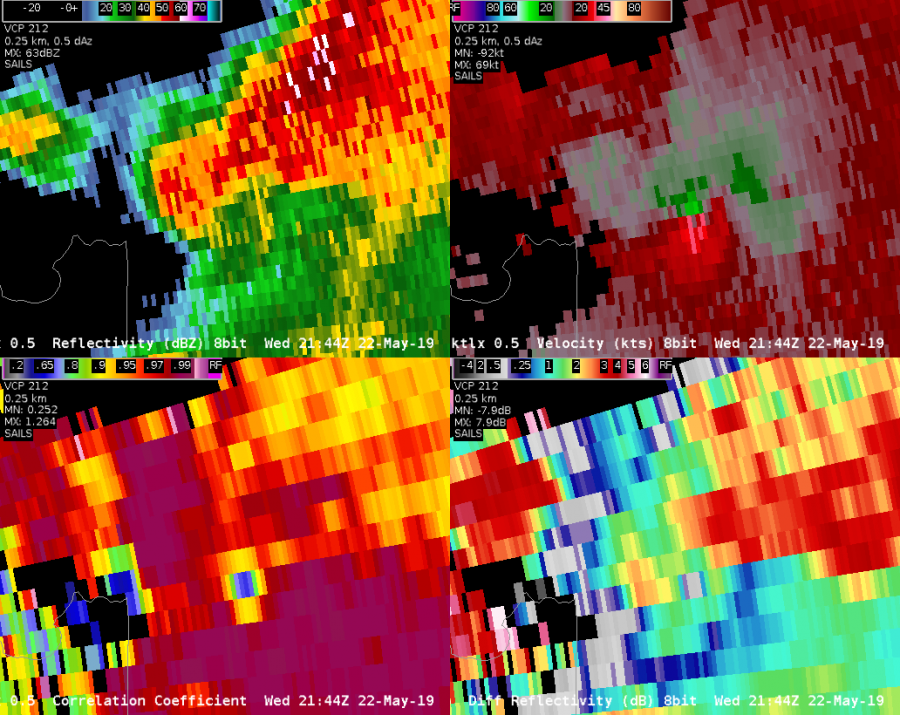
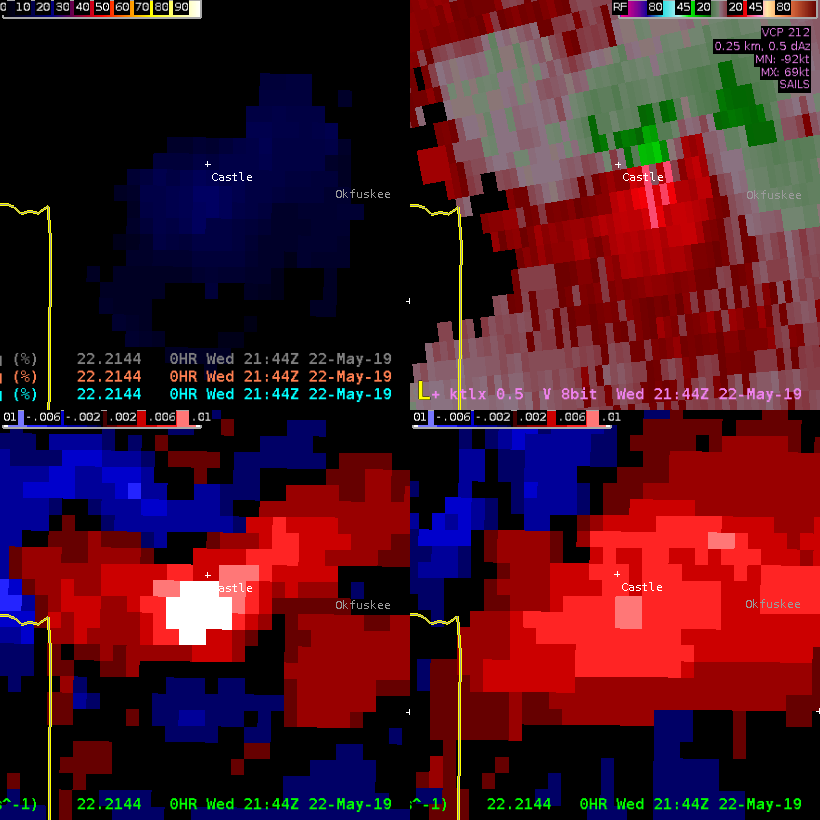


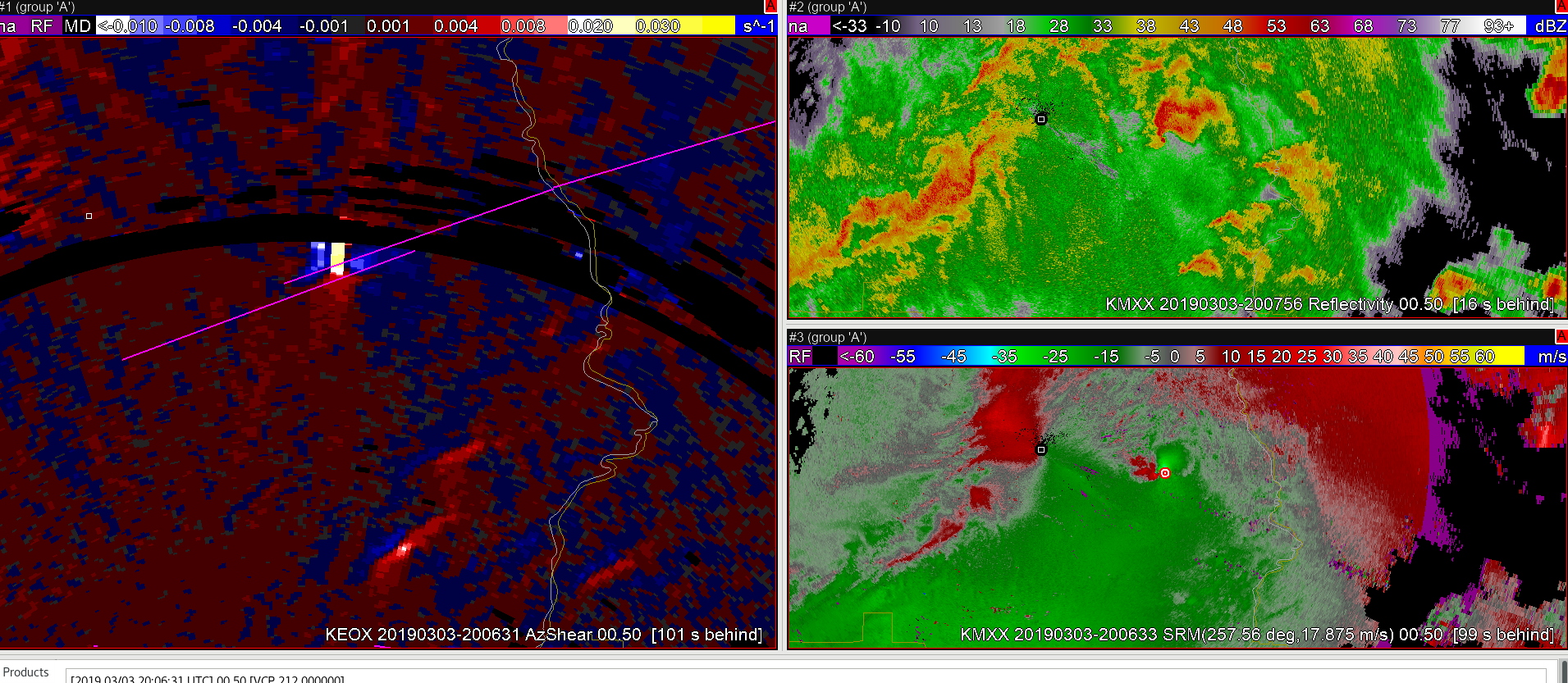 The Fort Rucker, AL (KEOX) radar, well south of the storm of interest, shows strong azimuthal shear values up to 0.028 S-1. The maximum values are slightly offset to the north of the surveyed tornado track (pink line) likely due to distance from the radar. A mature hook echo is apparent in the reflectivity with a corresponding tight couplet in the 0.5 degree SRM.
The Fort Rucker, AL (KEOX) radar, well south of the storm of interest, shows strong azimuthal shear values up to 0.028 S-1. The maximum values are slightly offset to the north of the surveyed tornado track (pink line) likely due to distance from the radar. A mature hook echo is apparent in the reflectivity with a corresponding tight couplet in the 0.5 degree SRM. The Maxwell, AL (KMXX) radar, located closer and to the west the tornadic supercell, was also detecting strong azimuthal shear up to 0.021 S-1. An area of negative shear was located immediately to the south of the SRM couplet, along a weaker anticyclonic inbound-outbound interface. This corridor of blue shades to bright white was a bit distracting from the more important red to white positive shear associated with the cyclonic rotation. The maximum positive shear values were located exactly on the track of the surveyed tornado. Reflectivity and SRM KMXX data were similar to KEOX.
The Maxwell, AL (KMXX) radar, located closer and to the west the tornadic supercell, was also detecting strong azimuthal shear up to 0.021 S-1. An area of negative shear was located immediately to the south of the SRM couplet, along a weaker anticyclonic inbound-outbound interface. This corridor of blue shades to bright white was a bit distracting from the more important red to white positive shear associated with the cyclonic rotation. The maximum positive shear values were located exactly on the track of the surveyed tornado. Reflectivity and SRM KMXX data were similar to KEOX.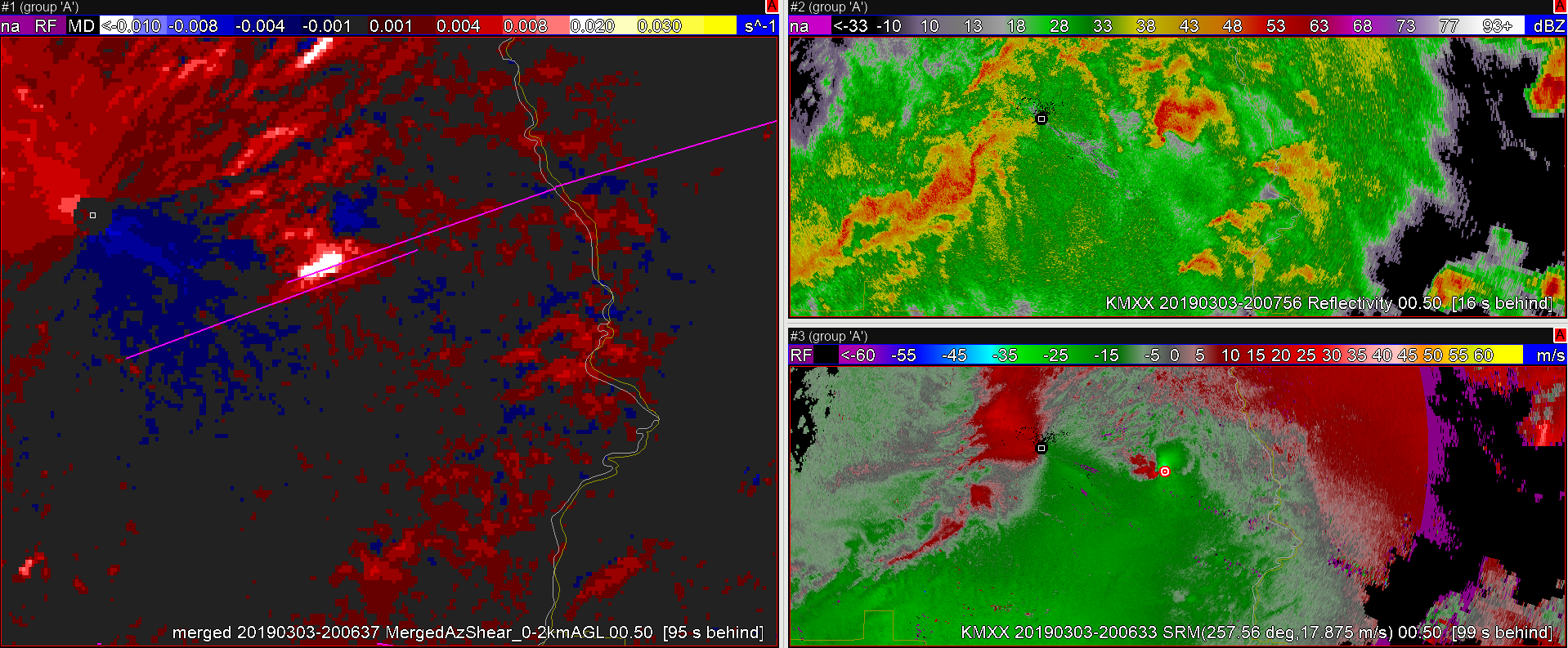 Merged 0-2 km azimuthal shear provided an accurate location of the meso/tornado and washed out the negative shear signal from the KMXX data. The shear values are lower than the single radar data.
Merged 0-2 km azimuthal shear provided an accurate location of the meso/tornado and washed out the negative shear signal from the KMXX data. The shear values are lower than the single radar data.  Merged 3-6 km azimuthal shear is displaced to the north of the tornado path (pink line).
Merged 3-6 km azimuthal shear is displaced to the north of the tornado path (pink line).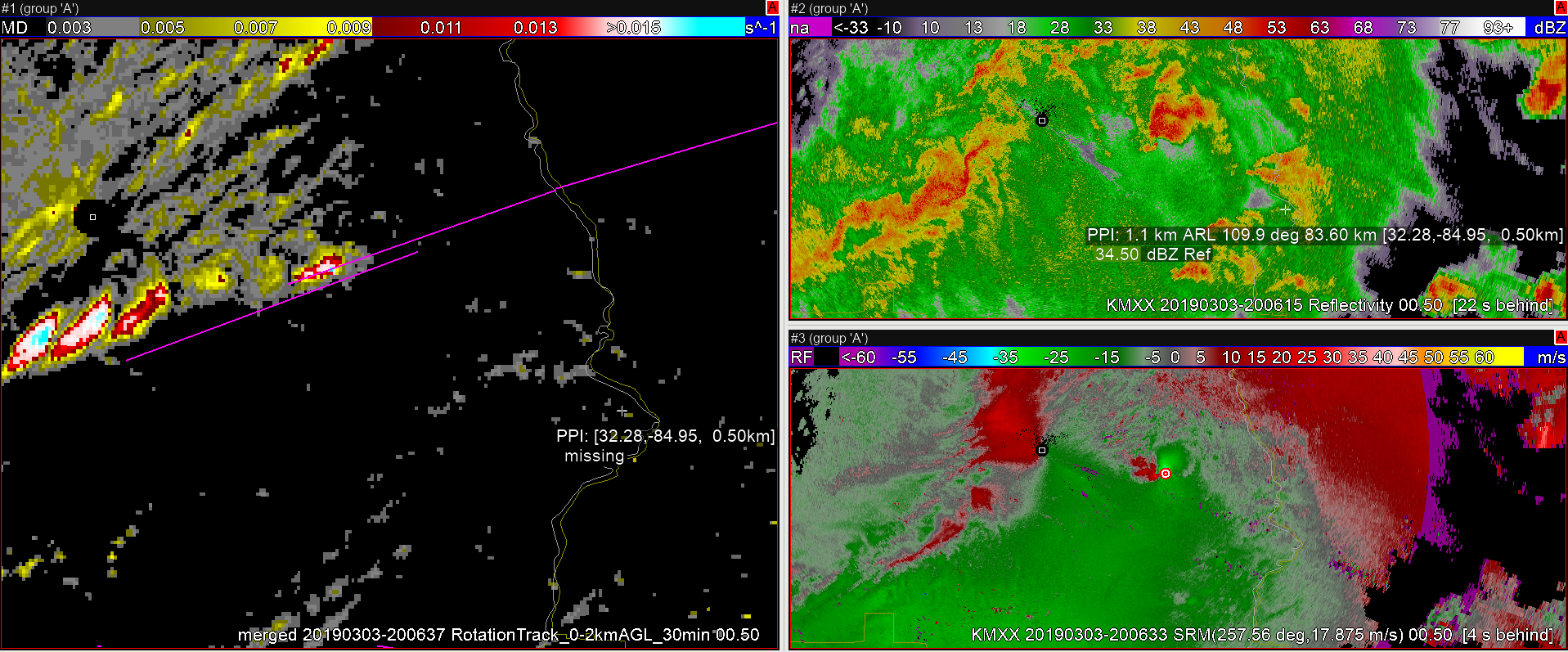 The merged 0-2 km rotation track has a very nice color scale (yellow to red to cyan) — key features really stand out.
The merged 0-2 km rotation track has a very nice color scale (yellow to red to cyan) — key features really stand out.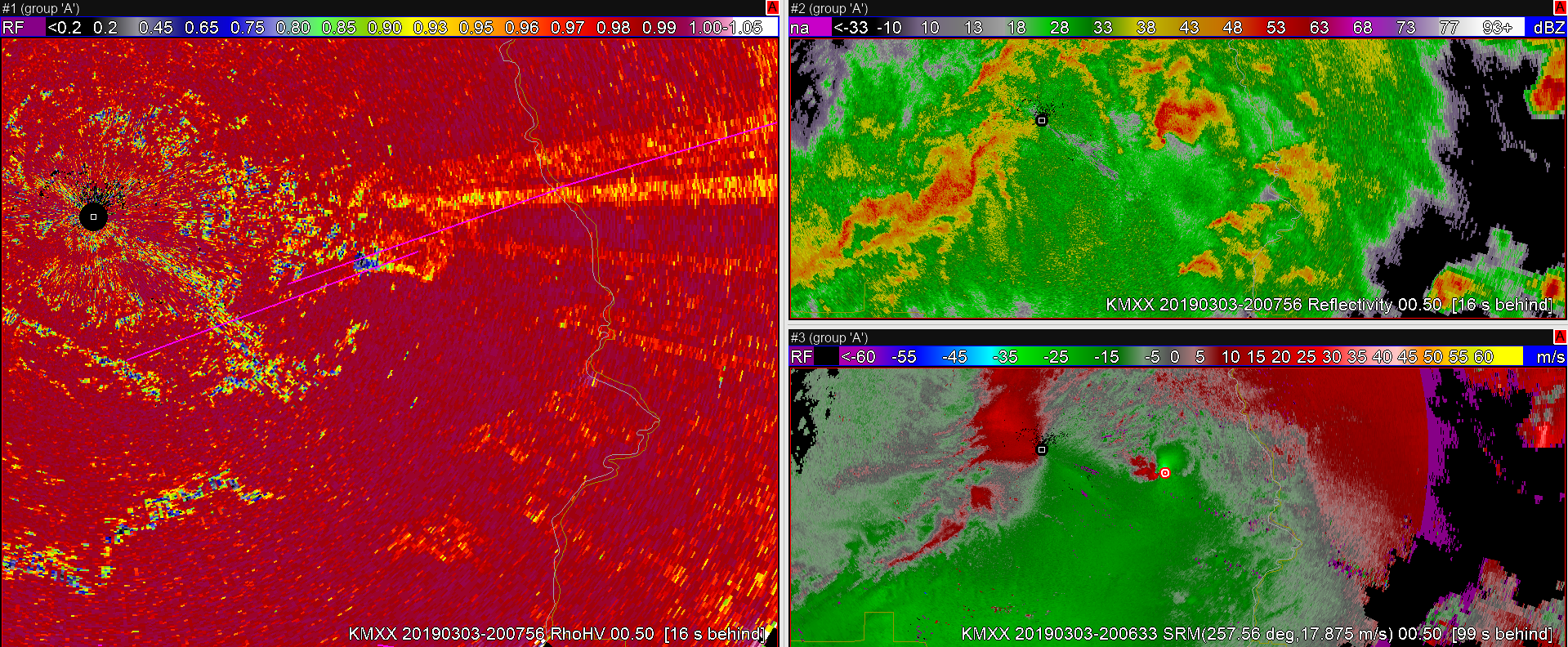
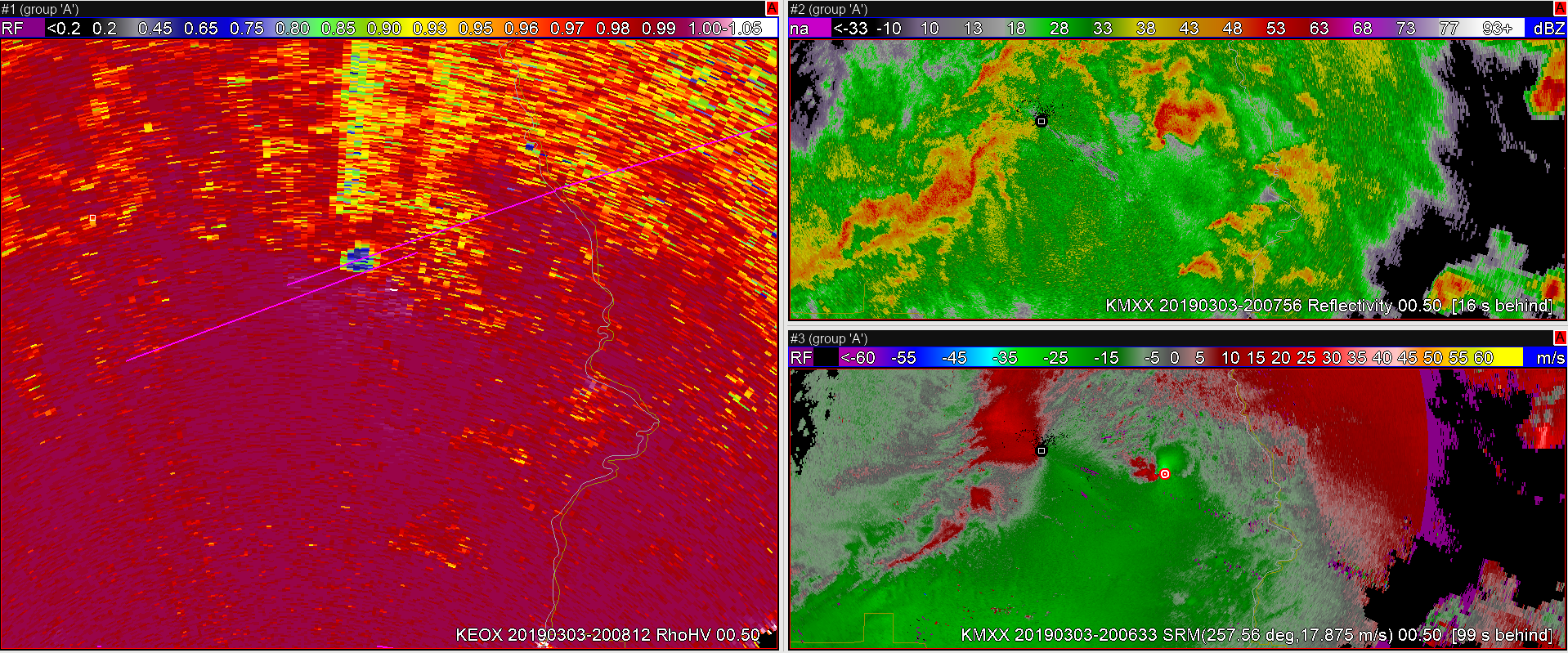
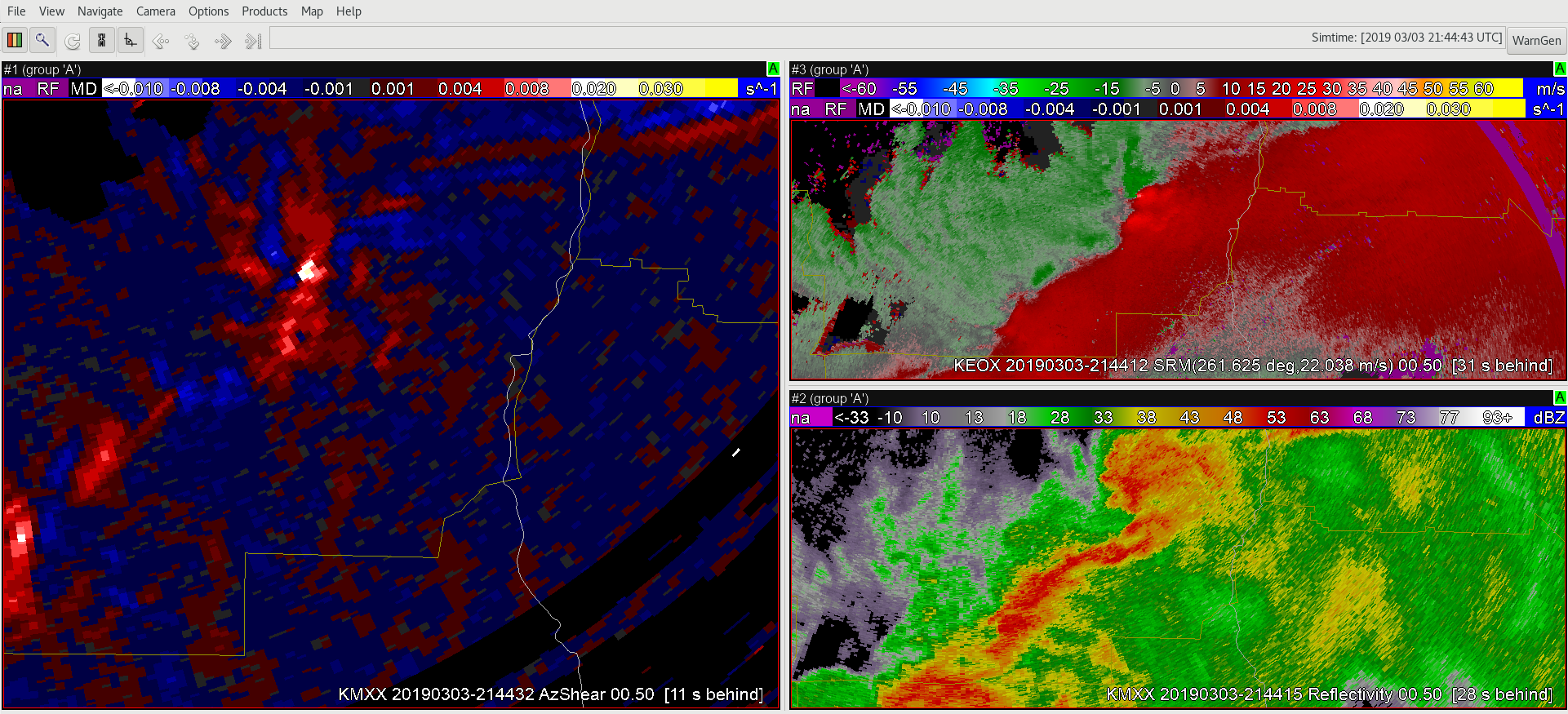
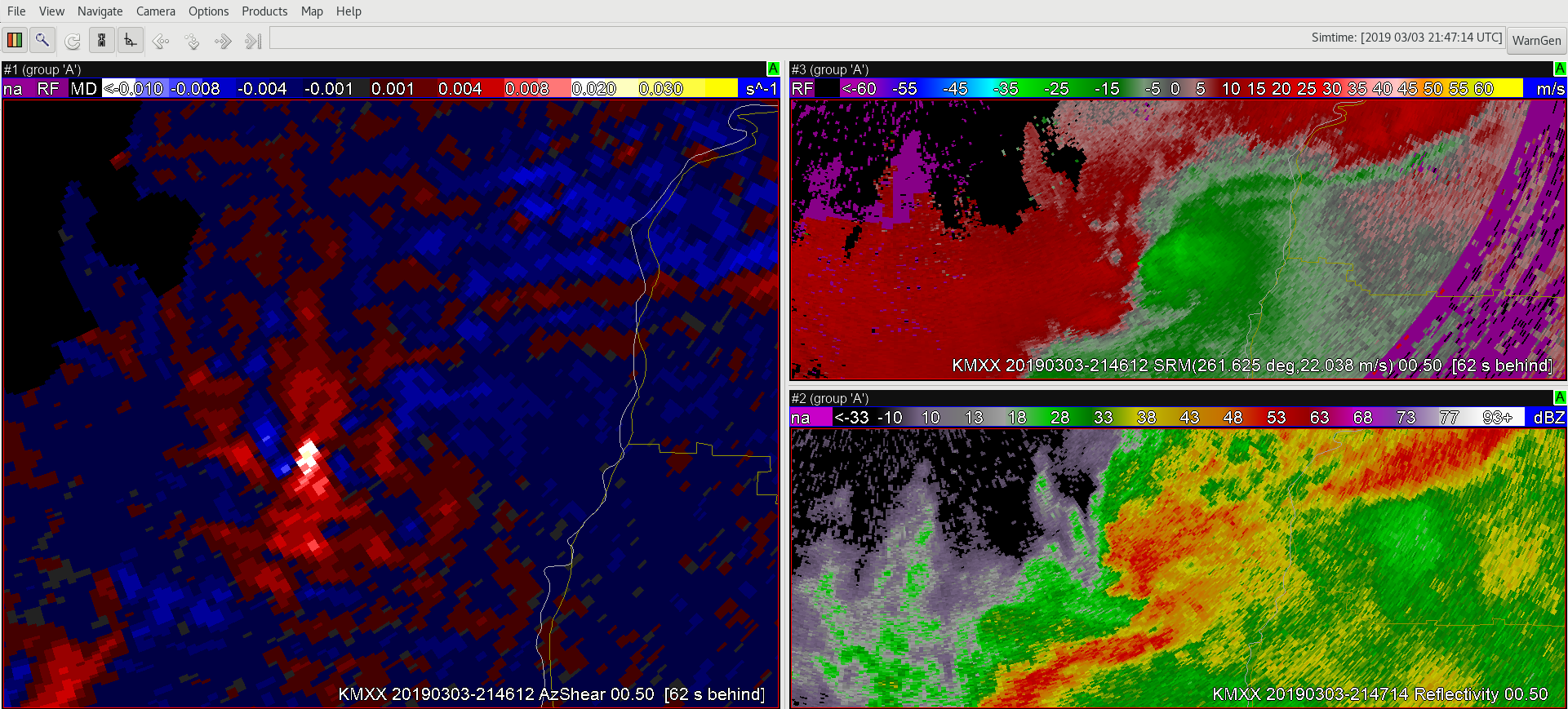
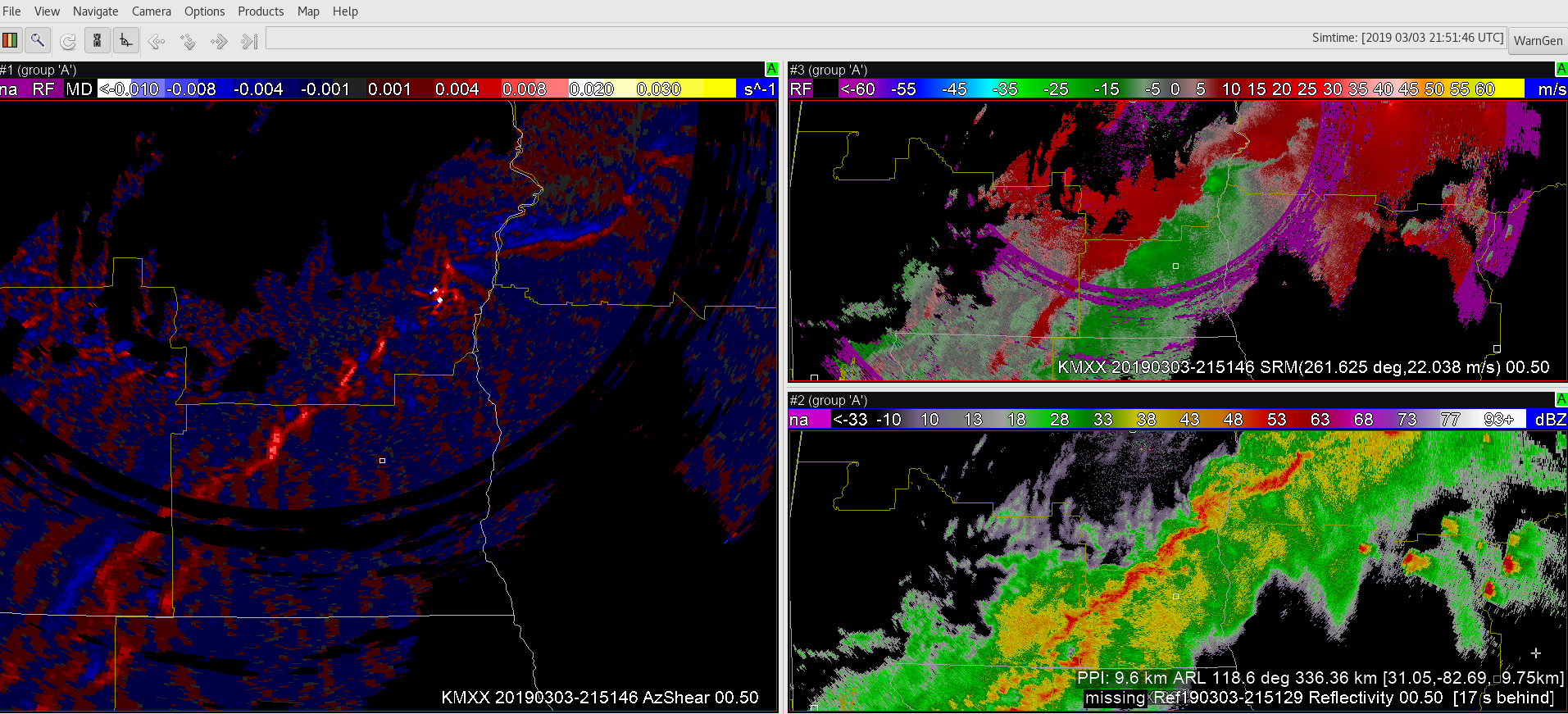
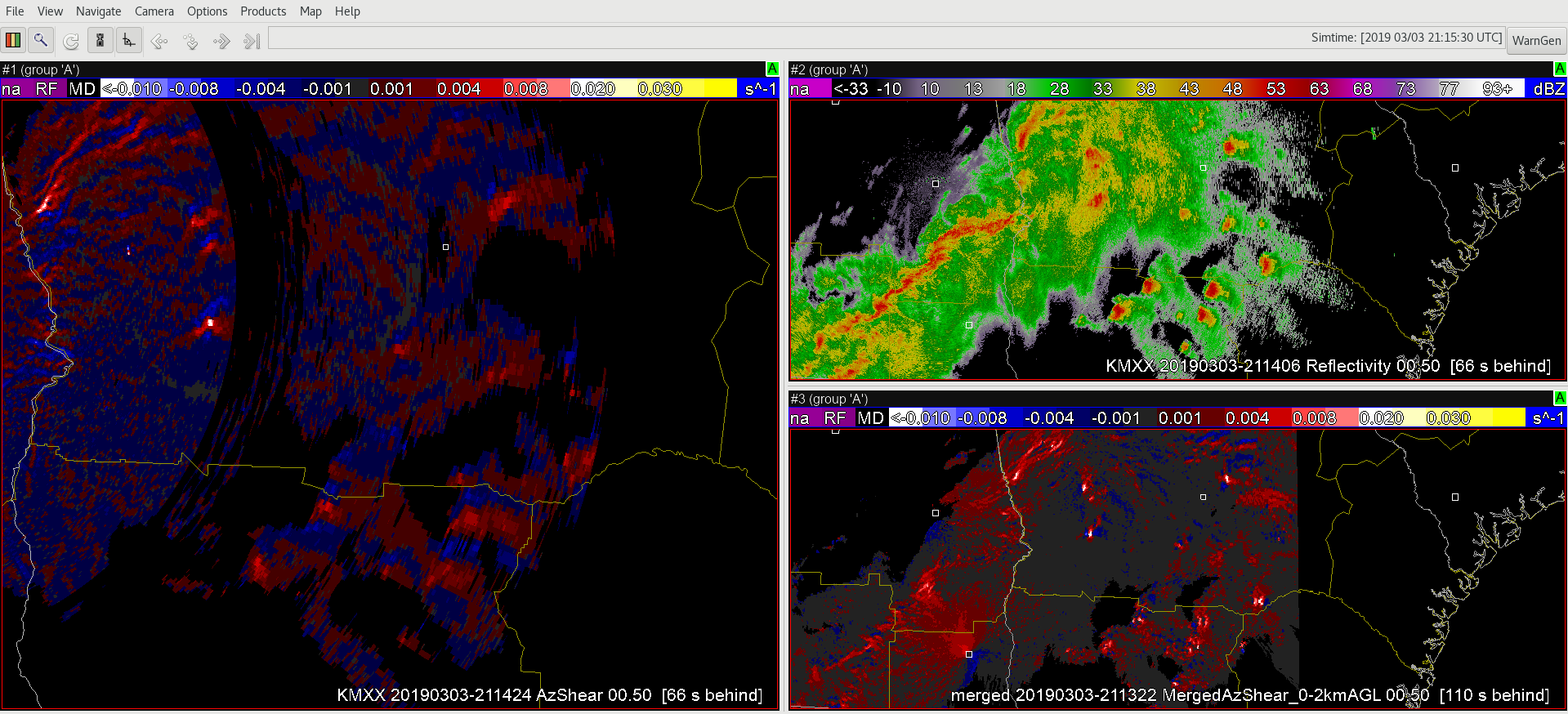
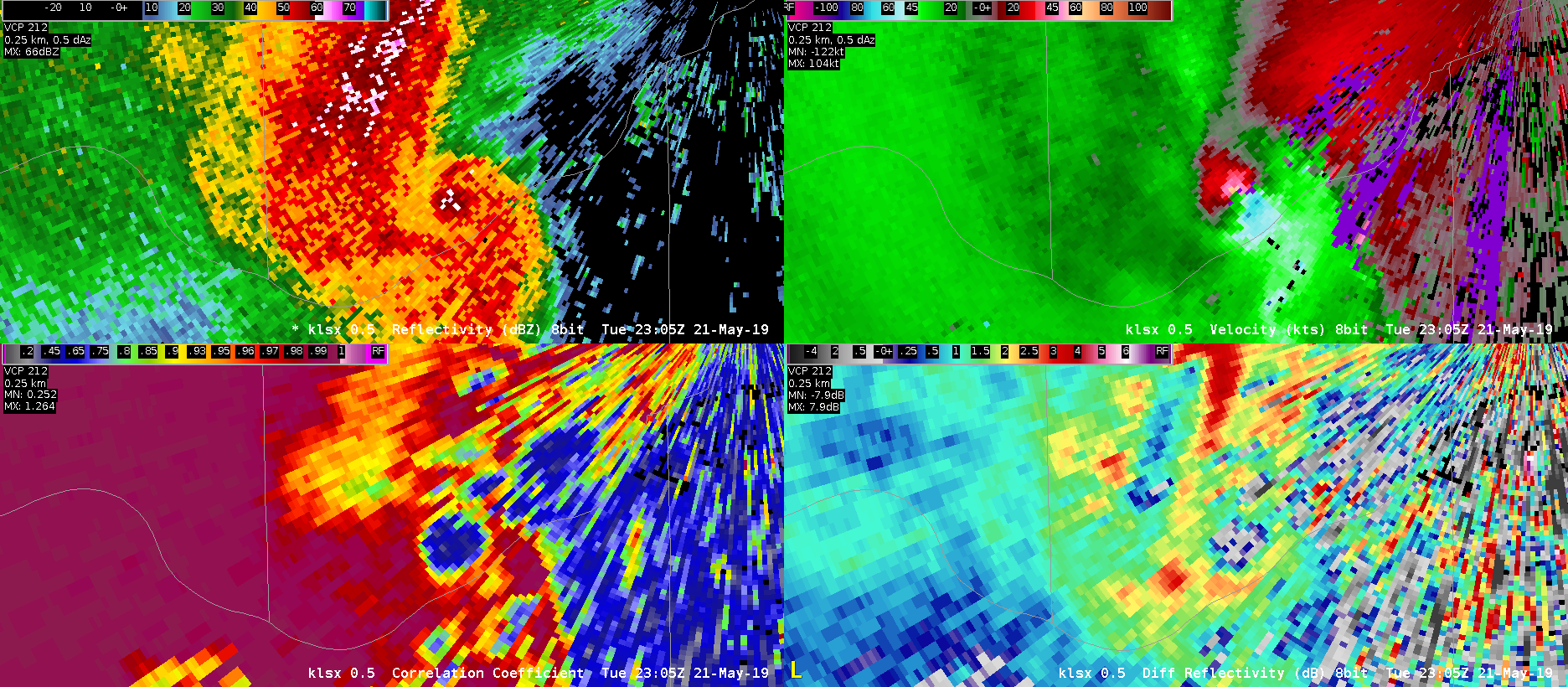

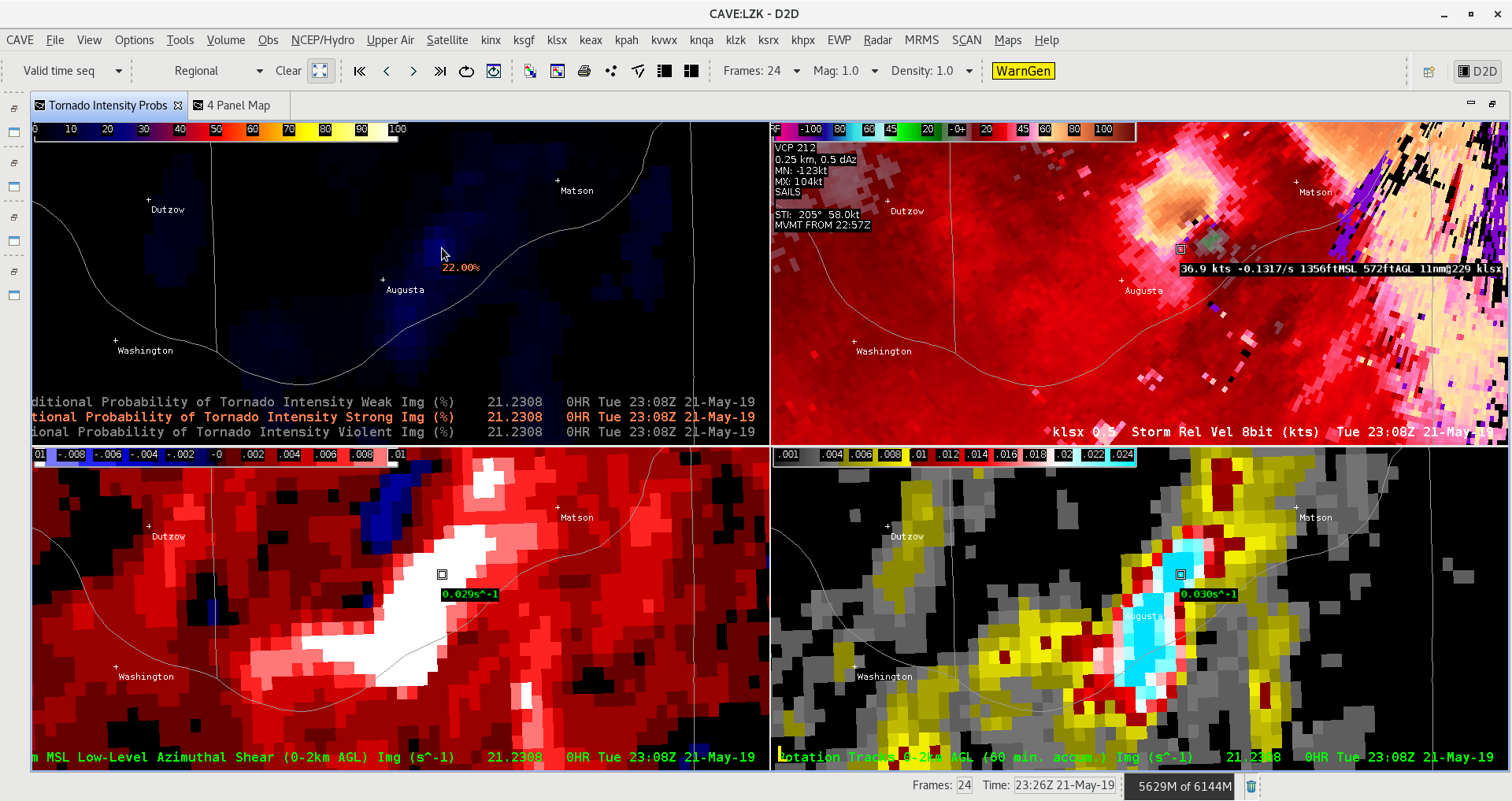

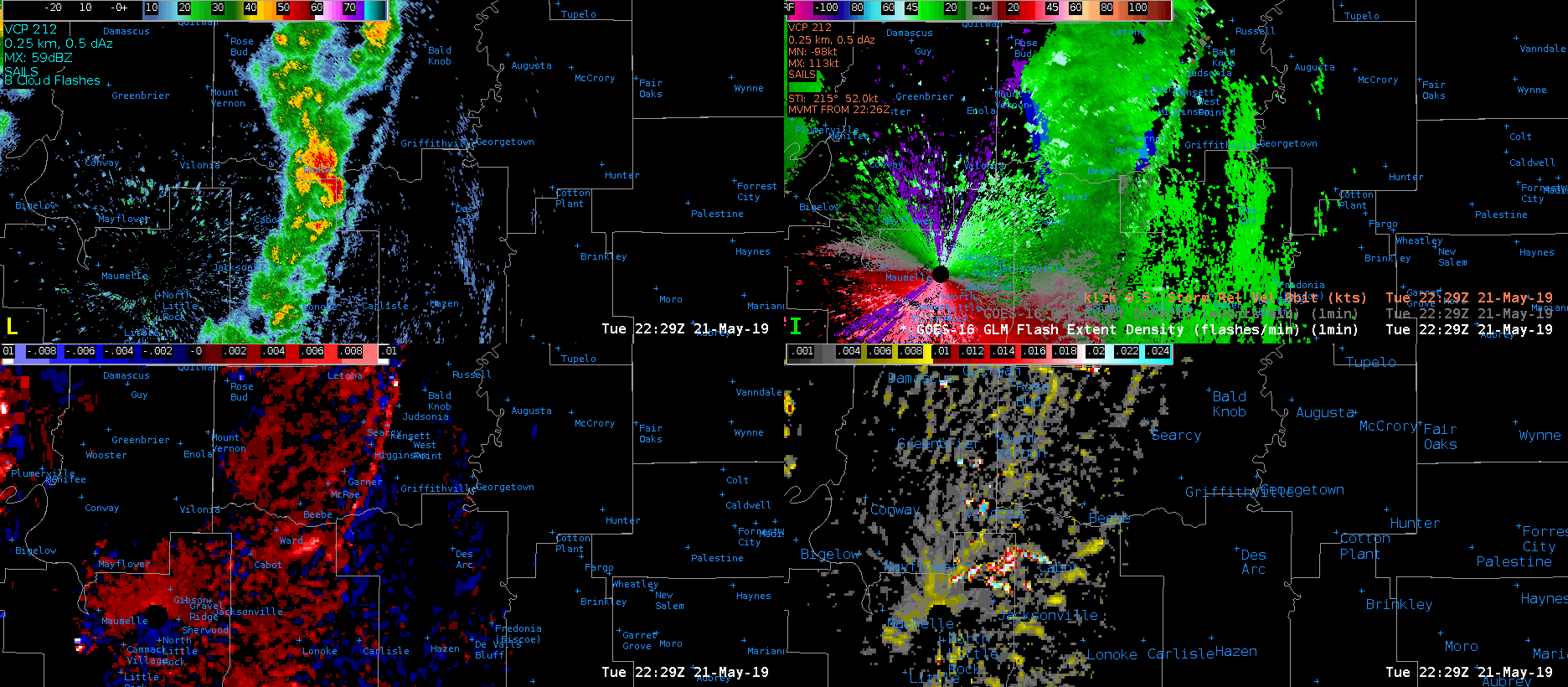
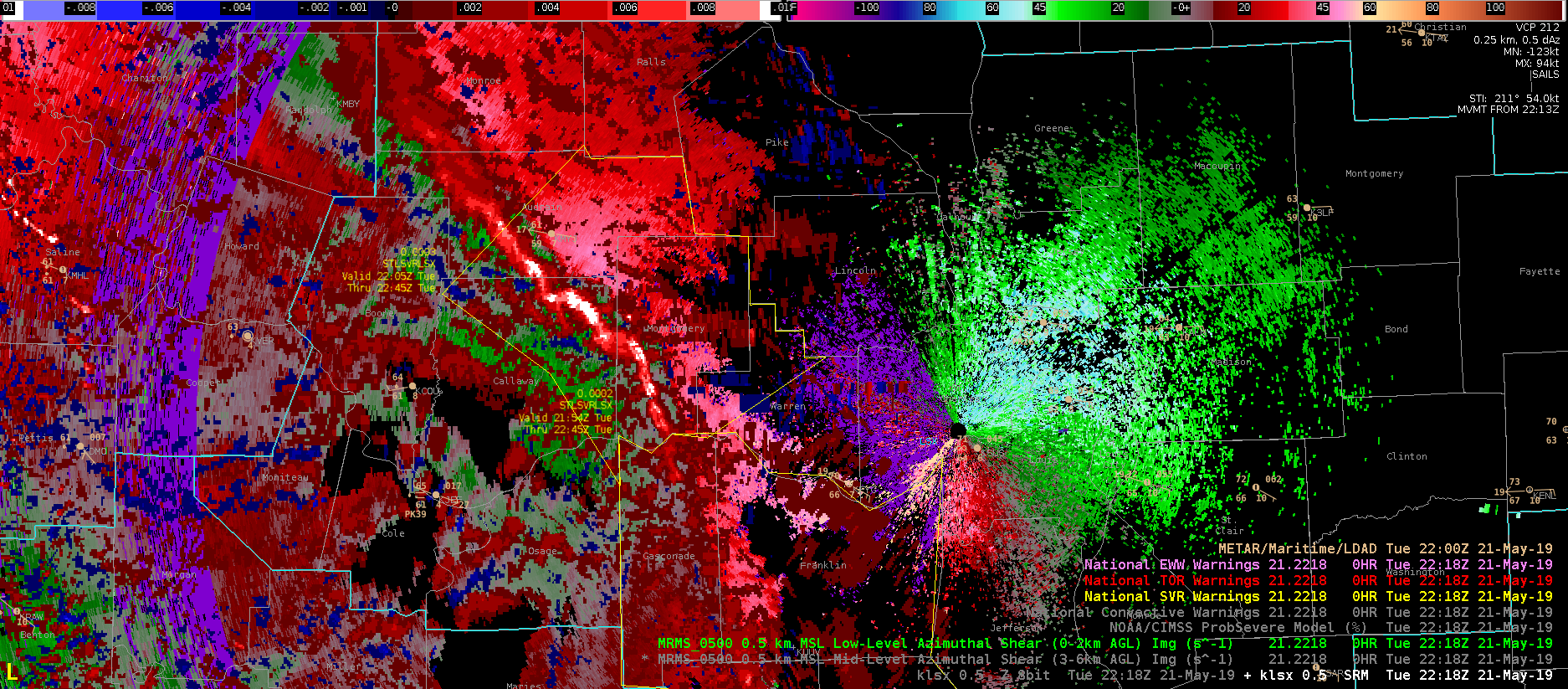
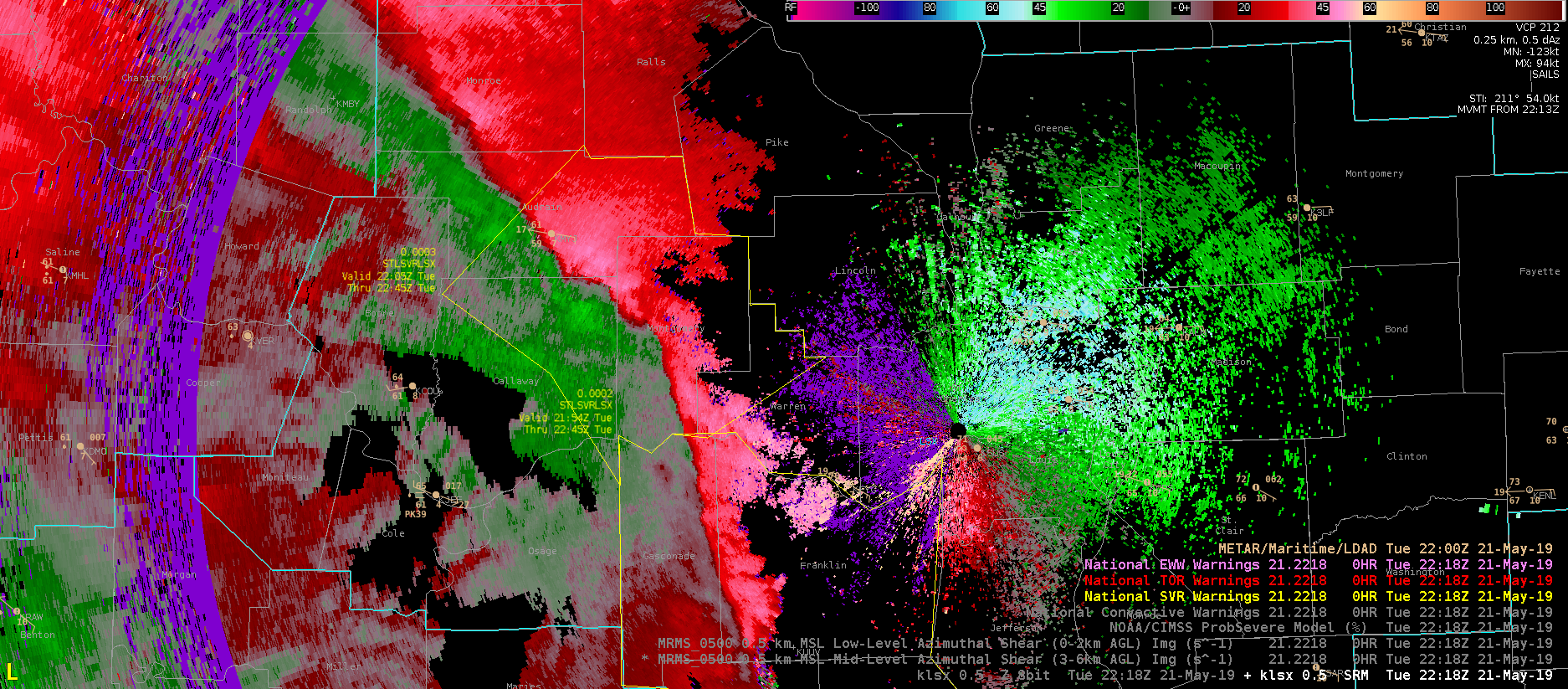
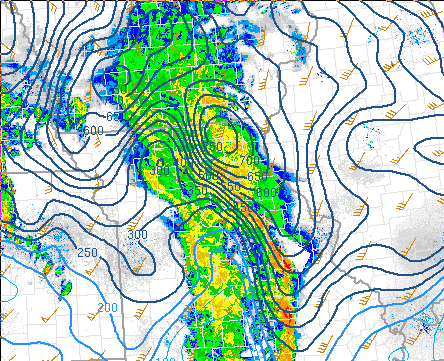
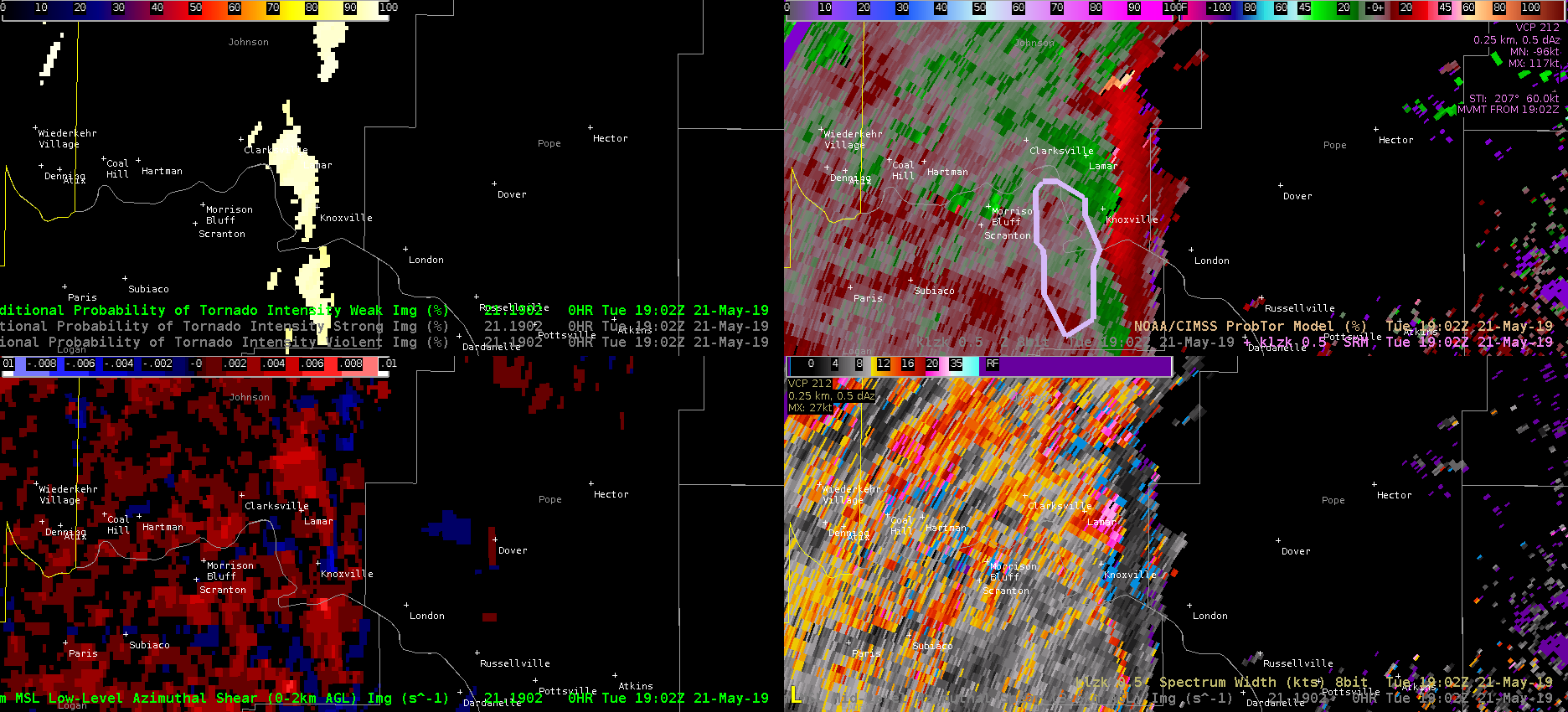
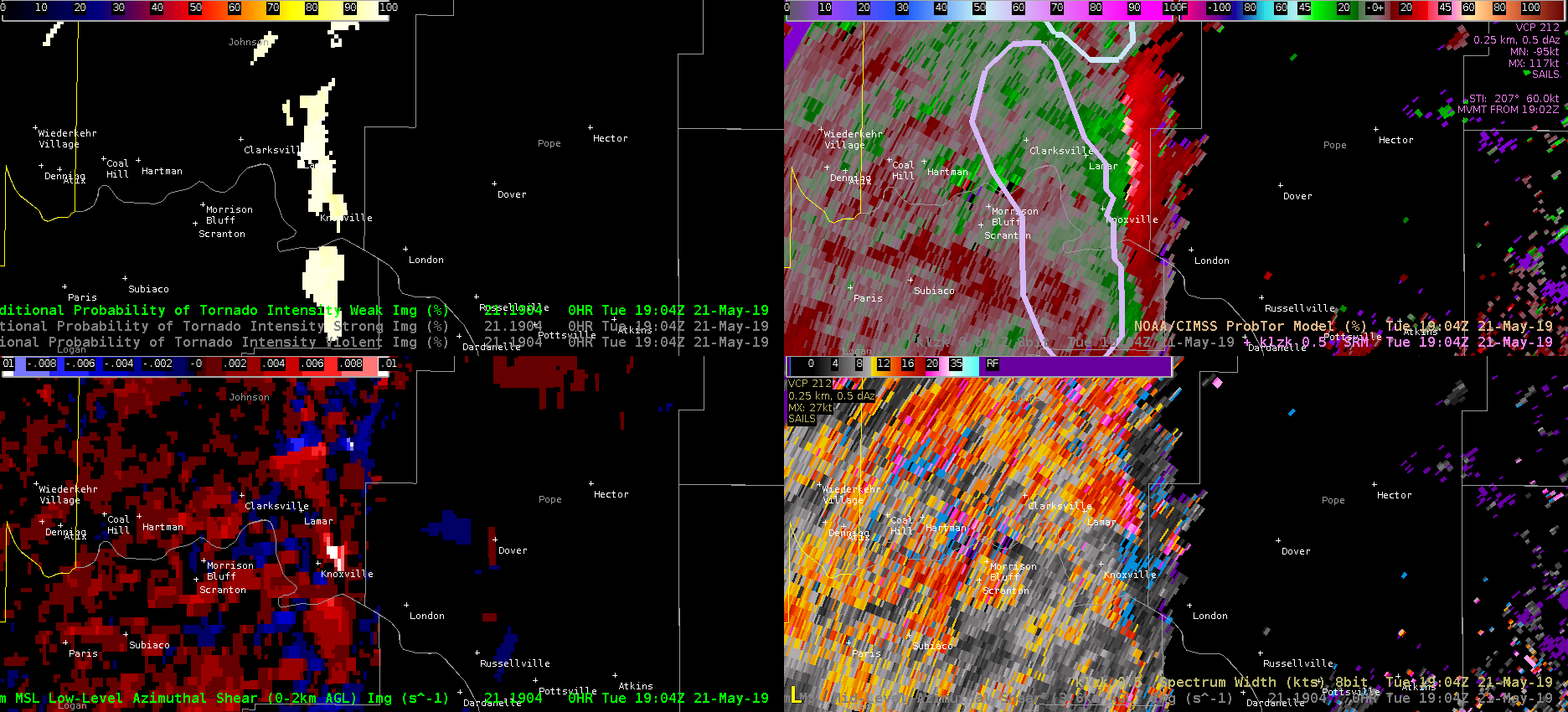
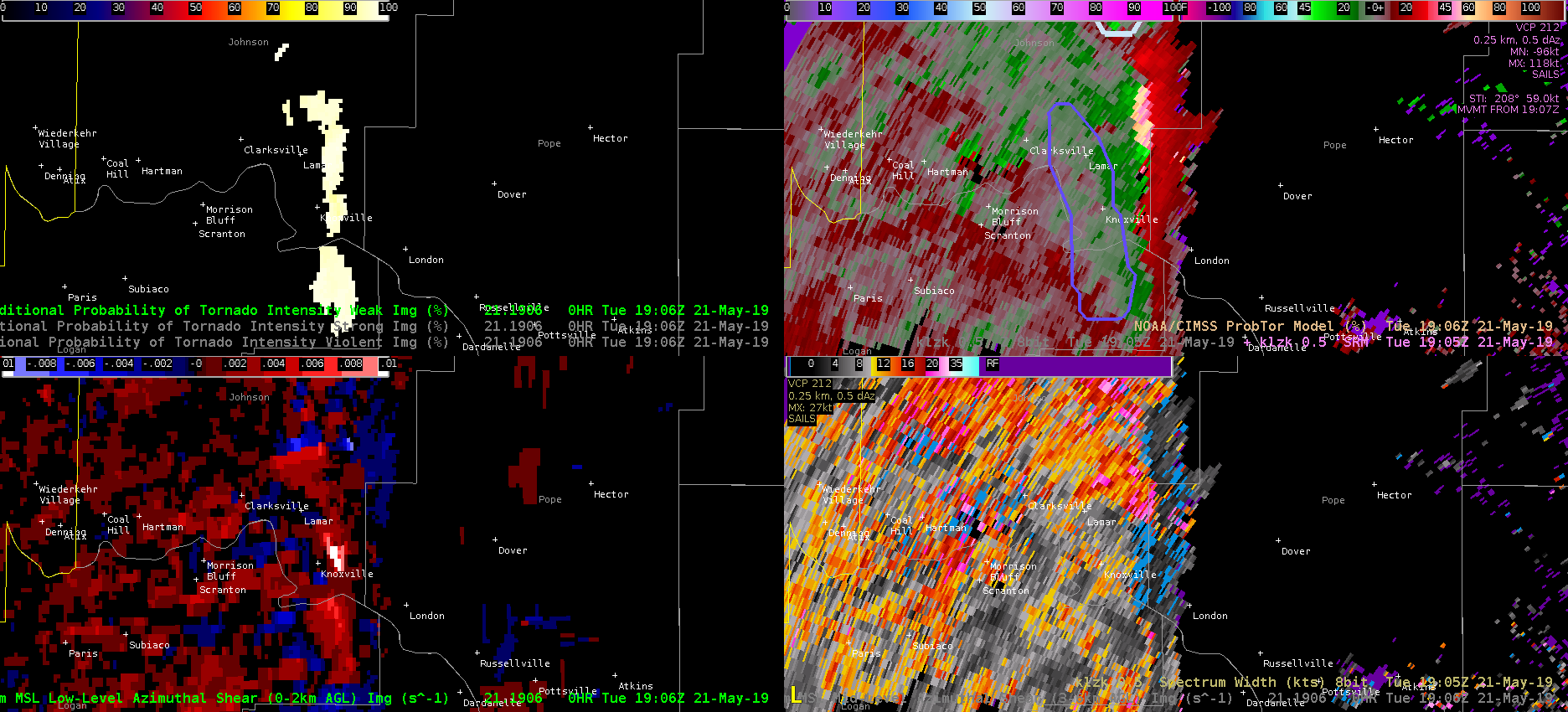
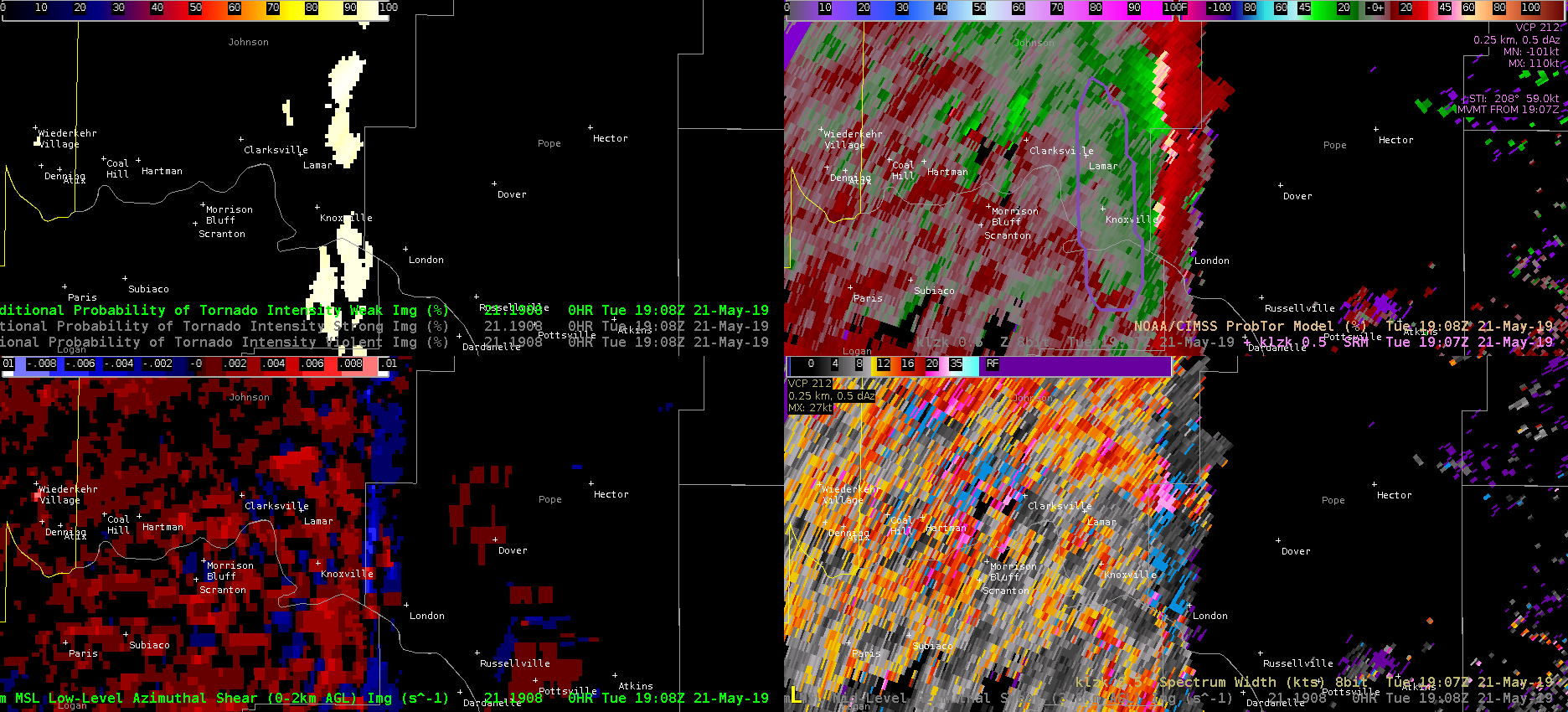
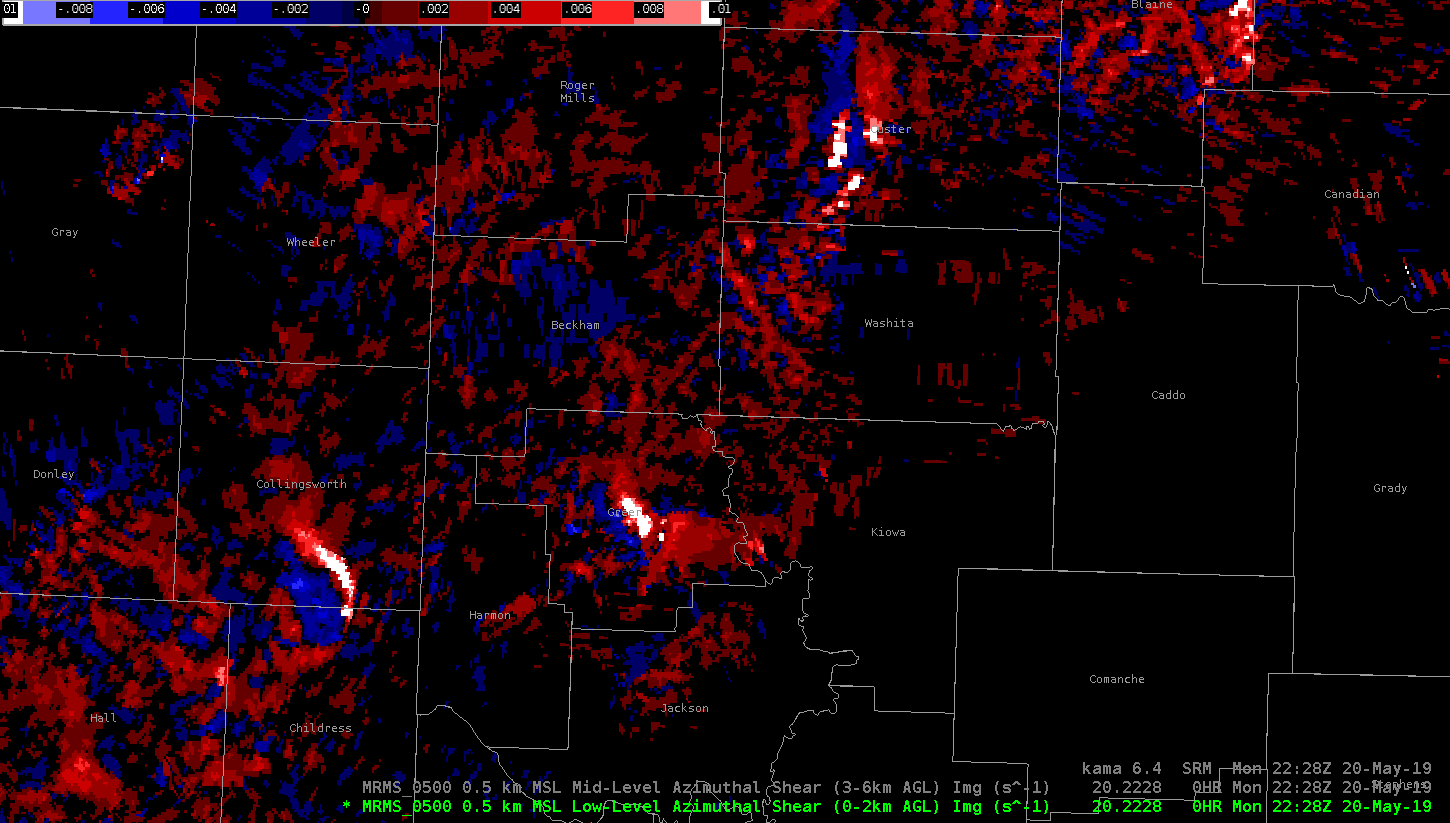
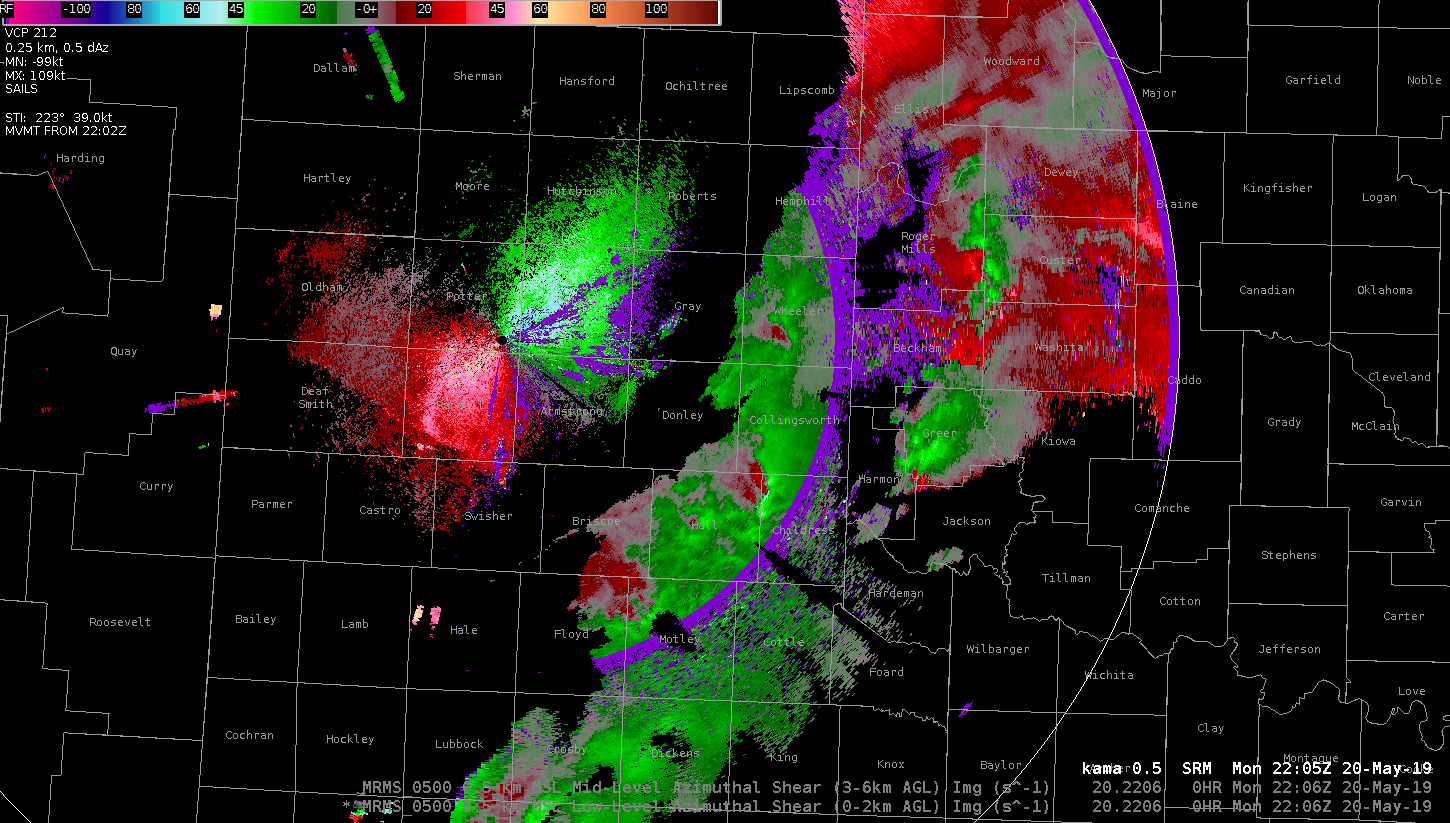 The reflectivity structure is more of a bow echo and the AzShear should be used with caution in identifying velocity couplets potentially associated with tornadoes. -Atlanta Braves
The reflectivity structure is more of a bow echo and the AzShear should be used with caution in identifying velocity couplets potentially associated with tornadoes. -Atlanta Braves